- About growing ground cucumbers
- Task 1: Prepare the soil
- Task 2: Planting
- Task 3: Watering
- Task 4: Fertilizing
- Task 5: Pest and disease control
- Task 6: Harvesting
- SIX tasks for long-lasting fruiting
- Preparing the soil
- Choosing the right cucumber variety
- 1. Climbing or bush
- 2. Disease resistance
- 3. Slicing or pickling
- 4. Days to maturity
- 5. Fruit color and size
- 6. Seed type
- Planting and spacing
- Providing proper support
- Trellis or Cage
- Sturdy Stakes
- Netting or Fencing
- Regular Pruning
- Using Mulch
- Regular Monitoring
- Watering and fertilizing
- 1. Watering
- 2. Fertilizing
- Monitoring and controlling pests
- Pest identification
- Regular inspection
- Biological control methods
- Chemical control methods
- Physical barriers
- Cultural practices
- Tips for successful cucumber cultivation
- “Question-Answer”
- What are the basic requirements for growing ground cucumbers?
- How often should ground cucumbers be watered?
- What is the ideal soil temperature for growing ground cucumbers?
- How can I prevent diseases and pests from affecting my ground cucumber plants?
- How long does it typically take for ground cucumbers to fruit?
- Can ground cucumbers be grown indoors?
- “Video” Grow MORE CUCUMBERS Than EVER With This Variety And One Simple Tip
Growing cucumbers in the ground is a popular method among gardeners, as it allows the plants to spread out and produce an abundance of fresh cucumbers. However, to ensure a successful harvest, there are several important tasks that need to be undertaken. In this article, we will explore six key tasks for growing ground cucumbers that will help to ensure long-lasting fruiting.
1. Soil preparation: Before planting cucumber seeds or seedlings, it is crucial to prepare the soil properly. Cucumbers require well-drained soil rich in organic matter. This can be achieved by adding compost or well-rotted manure to the soil and mixing it thoroughly.
2. Sunlight: Cucumbers thrive in full sunlight, so it is essential to choose a location in your garden that receives at least six to eight hours of direct sunlight each day. A sunny spot will enable the plants to photosynthesize effectively and produce healthy, flavorful cucumbers.
3. Watering: Adequate watering is crucial for the growth and fruiting of cucumber plants. The soil should be kept consistently moist, but not waterlogged. It is best to water the plants deeply, ensuring that the water reaches the roots. Mulching can help to retain moisture and prevent weed growth.
4. Fertilizing: Cucumber plants are heavy feeders and require regular fertilization to ensure healthy growth and fruiting. A balanced fertilizer, high in nitrogen, phosphorus, and potassium, should be applied every two to three weeks during the growing season. This will provide the plants with the necessary nutrients for vigorous growth and abundant fruit production.
5. Training and support: As cucumber plants grow, they tend to spread out and take up a considerable amount of space. To maximize the growing area and minimize the risk of disease, it is important to train and support the plants. This can be done by using trellises, stakes, or cages to keep the vines off the ground and promote air circulation.
6. Pest and disease management: Cucumber plants are susceptible to various pests and diseases, including aphids, cucumber beetles, powdery mildew, and bacterial wilt. Regular monitoring and proper management practices, such as using organic pesticides, removing infected plants, and practicing crop rotation, can help to minimize the impact of these pests and diseases on your cucumber crop.
By following these six tasks for growing ground cucumbers, you can ensure a successful harvest of fresh, delicious cucumbers throughout the growing season.
About growing ground cucumbers
Growing ground cucumbers is a rewarding and delicious activity that can be done in your own backyard. Whether you are a beginner or an experienced gardener, following these six tasks will help you achieve long-lasting fruiting and a bountiful harvest.
Task 1: Prepare the soil
Start by preparing the soil in your cucumber patch. Cucumbers thrive in well-draining soil that is rich in organic matter. Add compost or well-rotted manure to improve the soil’s fertility and moisture-holding capacity.
Task 2: Planting
Plant your cucumber seeds or seedlings in rows, with a spacing of about 18-24 inches between each plant. Make sure to provide support for climbing cucumbers by installing trellises or stakes.
Task 3: Watering
Cucumbers need consistent moisture to produce healthy fruit. Water the plants deeply at least once a week, providing about 1-2 inches of water. Avoid overwatering to prevent root rot.
Task 4: Fertilizing
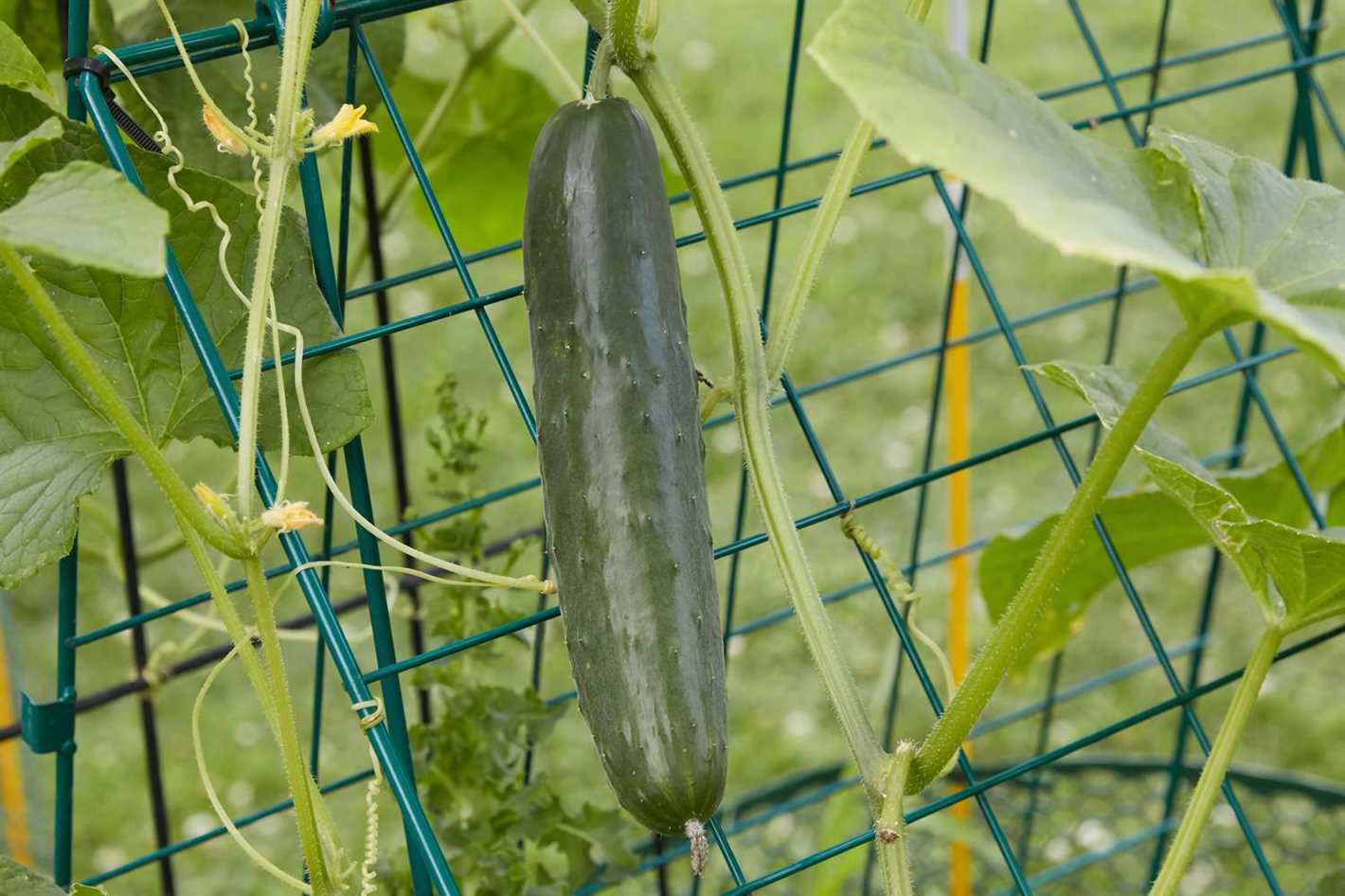
Feed your cucumber plants with a balanced fertilizer every 2-3 weeks. Use a water-soluble fertilizer or a slow-release granular fertilizer, following the package instructions for application rates.
Task 5: Pest and disease control
Keep an eye out for common pests such as aphids, cucumber beetles, and spider mites. Use organic pest control methods or insecticidal soaps to manage infestations. Prevent fungal diseases like powdery mildew by providing good air circulation and avoiding overhead watering.
Task 6: Harvesting
Harvest your cucumbers when they reach the desired size. For slicing cucumbers, harvest when they are about 6-8 inches long. Pickling cucumbers can be harvested when they are around 2-4 inches long. Regular harvesting will encourage the plant to produce more cucumbers.
Following these six tasks will help you grow ground cucumbers successfully and enjoy a continuous supply of fresh cucumbers throughout the growing season. Happy gardening!
SIX tasks for long-lasting fruiting
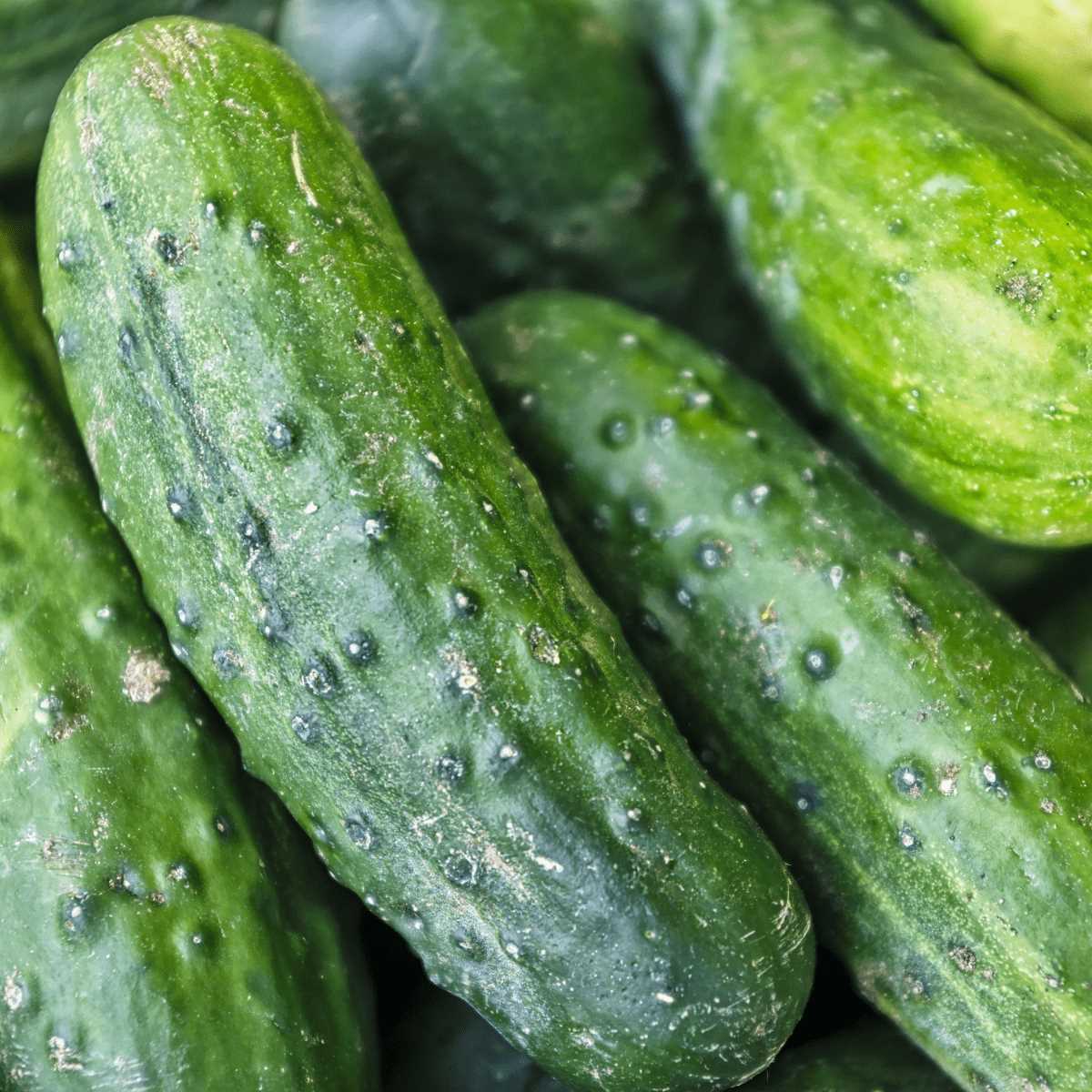
Cucumbers are a popular vegetable that can be grown in gardens or containers. To ensure a long-lasting fruiting season, there are six important tasks that need to be done.
- Proper soil preparation: Start by preparing the soil before planting the cucumber seeds. Cucumbers prefer well-drained soil that is rich in organic matter. It is recommended to add compost or well-rotted manure to improve the soil’s fertility.
- Choosing the right variety: There are different varieties of cucumbers available, such as slicing cucumbers, pickling cucumbers, or burpless cucumbers. Choose a variety that suits your needs and growing conditions.
- Providing support: Cucumbers are climbing plants, and they require support to grow upright. Install trellises or stakes to provide support to the cucumber plants. This also helps in saving space and improves air circulation around the plants.
- Regular watering: Cucumbers need consistent moisture to flourish. Water the plants deeply and regularly, especially during hot summer days. Avoid overhead watering to prevent diseases. Mulching around the plants can also help in conserving moisture.
- Fertilizing: Cucumbers are heavy feeders and require regular fertilization. Apply a balanced fertilizer or compost when planting, and continue to feed the plants every few weeks. This helps in maintaining plant health and promoting fruiting.
- Pest and disease control: Keep an eye out for common cucumber pests and diseases, such as cucumber beetles, powdery mildew, or cucumber mosaic virus. Regularly inspect the plants and take necessary measures, such as using insecticides or disease-resistant varieties, to control pests and diseases.
By following these six important tasks, you can ensure a productive and long-lasting cucumber fruiting season in your garden or containers.
Preparing the soil
Before planting ground cucumbers, it is important to prepare the soil to ensure optimal growth and fruiting. Follow these steps to properly prepare the soil:
- Choose a sunny location: Cucumbers thrive in full sun, so select a spot in your garden that receives at least 6-8 hours of direct sunlight each day.
- Clear the area: Remove any weeds, rocks, or debris from the planting area. Weeds can compete with cucumbers for nutrients and inhibit growth.
- Loosen the soil: Use a garden fork or tiller to loosen the soil to a depth of about 12-18 inches. This will improve drainage and allow the roots to penetrate easily.
- Amend the soil: Mix in organic matter such as compost or well-rotted manure. This will help improve soil fertility, structure, and water retention.
- Test the soil: Use a soil testing kit to check the pH level of your soil. Cucumbers prefer a pH range of 6.0-7.0. If necessary, adjust the pH by adding lime to raise it or sulfur to lower it.
- Add fertilizer: Apply a balanced granular fertilizer, such as a 10-10-10, according to the package instructions. This will provide essential nutrients needed for healthy cucumber growth.
- Create trellises or supports: If you plan to grow cucumbers vertically, install trellises or supports in the soil prior to planting. This will help keep the plants off the ground, prevent rot, and allow for better air circulation.
By following these steps, you will ensure that your soil is ready to support the growth and fruiting of ground cucumbers. Proper soil preparation is crucial for a successful cucumber harvest.
Choosing the right cucumber variety
When it comes to growing cucumbers, choosing the right variety is crucial to ensure a successful harvest. With so many options available, it’s important to consider the specific needs and preferences of your garden before making a selection. Here are some factors to consider when choosing the right cucumber variety:
1. Climbing or bush
Cucumbers can be either climbing or bush varieties. Climbing cucumbers vine and require support, while bush cucumbers do not require support and tend to stay compact. Consider the space available in your garden and the level of support you are willing to provide when deciding between climbing and bush varieties.
2. Disease resistance
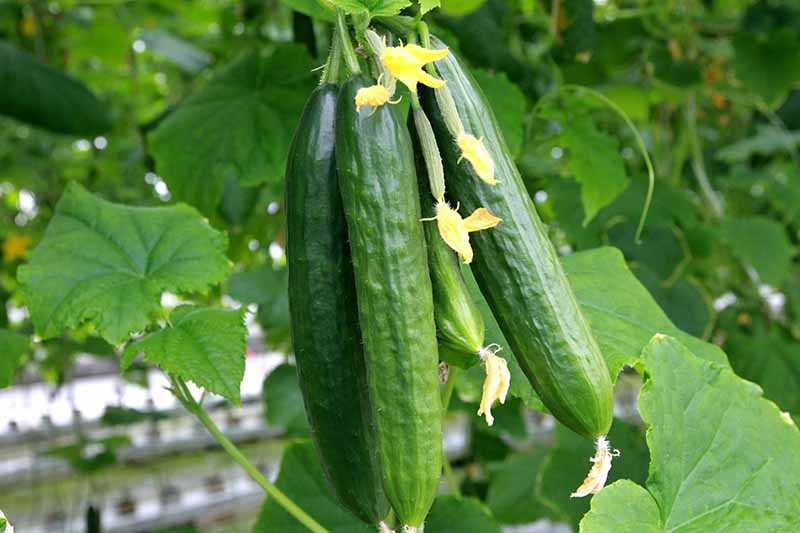
Cucumbers are prone to various diseases, such as powdery mildew, mosaic virus, and cucumber beetles. It’s advisable to choose a cucumber variety that is resistant to common diseases in your area. This will help ensure a healthy and productive crop.
3. Slicing or pickling
Consider the purpose for which you want to grow cucumbers. If you plan to use them for fresh consumption, look for slicing varieties that have a crisp and mild flavor. On the other hand, if you’re interested in making pickles, choose a pickling variety that has a smaller size and a more bitter taste.
4. Days to maturity
The average time it takes for a cucumber plant to produce fruit varies among different varieties. Some cucumbers mature in as little as 50 days, while others may take up to 80 days or more. Consider the length of your growing season and the time you’re willing to wait for cucumbers to mature when selecting a variety.
5. Fruit color and size
Cucumber varieties come in a range of colors, from traditional green to yellow and even white. Similarly, sizes can vary from small to large. Consider your personal preferences and the intended use of the cucumbers when choosing a variety based on fruit color and size.
6. Seed type
There are two main types of cucumber seeds: open pollinated and hybrid. Open pollinated varieties produce seeds that can be saved and used for future plantings. Hybrid varieties, on the other hand, are the result of cross-pollination and may offer improved disease resistance, yield, or other characteristics. Consider your preference for seed-saving and the specific characteristics you’re looking for in a cucumber variety when choosing between open pollinated and hybrid seeds.
By considering these factors, you can choose a cucumber variety that is well-suited to your garden and your personal preferences. Whether you’re growing cucumbers for fresh consumption or pickling, selecting the right variety is the first step towards a bountiful harvest.
Planting and spacing
Proper planting and spacing are crucial for growing ground cucumbers successfully. Here are some guidelines to follow:
- Choose a sunny spot: Cucumbers require full sun to thrive. Select a location in your garden that receives at least 6-8 hours of direct sunlight per day.
- Prepare the soil: Cucumbers prefer well-drained soil rich in organic matter. Before planting, amend the soil with compost or aged manure to improve its fertility and drainage.
- Plant cucumber seeds or seedlings: Cucumbers can be grown from seeds or purchased seedlings. If starting from seeds, sow them directly in the ground after the last frost date in your area. Make sure to space the seeds according to the recommendations on the seed packet. If using seedlings, transplant them into the garden after they have developed a few true leaves.
- Provide support: Although ground cucumbers generally crawl along the soil, it’s a good idea to provide support, such as trellises or cages, for them to climb. This can help to maximize space and improve air circulation around the plants.
- Space the plants: Cucumber plants need adequate space to grow and spread. Allow 2-3 feet (60-90 cm) of space between each plant to ensure proper air circulation and reduce the risk of diseases.
Following these planting and spacing guidelines will help you create an ideal environment for your ground cucumbers to thrive and produce a bountiful harvest.
Providing proper support
Growing cucumbers on the ground may result in the fruit being in direct contact with the soil, making them prone to rotting and becoming contaminated with soil-borne diseases. By providing proper support to your cucumber plants, you can prevent these issues and ensure long-lasting fruiting.
Trellis or Cage
One of the most effective ways to support cucumber plants is by using a trellis or cage. This vertical support structure allows the vines to grow upward, keeping the fruits off the ground. It also helps with air circulation and sunlight exposure, which are essential for healthy fruit development.
Sturdy Stakes
If you prefer not to use a trellis or cage, you can provide support to your cucumber plants using sturdy stakes. Place the stakes at regular intervals along the row of plants and tie the vines to them as they grow. This will help keep the fruits elevated and prevent them from touching the ground.
Netting or Fencing
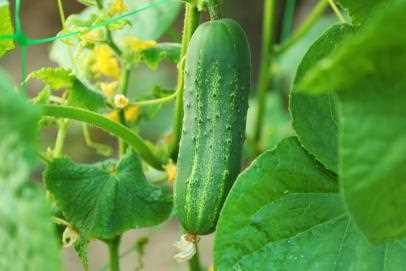
Another option for supporting cucumber plants is to use netting or fencing. Install a vertical net or fence structure behind the plants and guide the vines to grow along it. This method not only provides support but also helps in managing the plants’ growth and keeping them organized.
Regular Pruning
In addition to providing physical support, regular pruning of cucumber plants is essential for optimal fruit production. Pruning helps to remove excessive foliage, allowing better air circulation and reducing the risk of diseases. It also helps the plants focus their energy on fruit development, resulting in larger and higher-quality cucumbers.
Using Mulch
To further protect the fruits from direct contact with the ground, consider using mulch around the base of the plants. Mulch acts as a barrier, keeping the soil moisture levels consistent and reducing the potential for soil-borne diseases. It also helps to regulate the temperature around the plants, promoting healthy growth.
Regular Monitoring
Lastly, it’s important to regularly monitor your cucumber plants and their support structures. Check for any signs of damage or weakness, such as broken stakes or sagging netting. Make necessary repairs or adjustments to ensure the continued support of your plants and the longevity of their fruiting season.
By providing proper support to your cucumber plants, you can enjoy a bountiful harvest of fresh cucumbers throughout the growing season.
Watering and fertilizing
Proper watering and fertilizing are essential for the successful growth of ground cucumbers. Here are some tips to ensure your plants receive sufficient water and nutrients:
1. Watering
Cucumbers require consistent moisture to develop properly. The soil should always be slightly moist, but not waterlogged, as this can lead to root rot. Here’s how you should water your cucumber plants:
- Water your plants deeply once or twice a week, depending on weather conditions. Aim to provide around 1-2 inches of water per week.
- Water the plants early in the morning or late in the evening to minimize water evaporation and reduce the risk of fungal diseases.
- Avoid wetting the foliage while watering, as this can also promote fungal diseases. Instead, aim to water the base of the plants.
- Consider using a soaker hose or drip irrigation system to deliver water directly to the plant’s roots.
2. Fertilizing
Cucumbers are heavy feeders and require regular fertilization to ensure healthy growth. Follow these guidelines for fertilizing your cucumber plants:
- Before planting, incorporate well-rotted organic matter, such as compost or aged manure, into the soil to enhance its fertility.
- Apply a balanced fertilizer, such as a 10-10-10 or 14-14-14, at a rate of 1 tablespoon per plant, approximately 2 weeks after transplanting seedlings or when the plants start to vine.
- Repeat the fertilizer application every 4-6 weeks throughout the growing season.
- Avoid over-fertilizing, as this can lead to excessive foliage growth and reduced fruit production.
- Monitor the plants for nutrient deficiencies, such as yellowing leaves or stunted growth, and adjust the fertilizer application accordingly.
By following these watering and fertilizing practices, you can ensure that your ground cucumbers receive the necessary moisture and nutrients for healthy and productive growth.
Monitoring and controlling pests
Pest identification
To effectively monitor and control pests on your cucumber plants, it is important to be able to identify the common pests that can affect them. Some of the pests that commonly attack cucumber plants include:
- Cucumber beetles
- Aphids
- Spider mites
- Fruit flies
- Slugs and snails
By being able to identify these pests, you can take appropriate action to prevent and control their infestation.
Regular inspection
Regularly inspect your cucumber plants to catch any signs of pest infestation early on. Look for visual cues such as chewed leaves, discolored foliage, or small insects on the plants. Inspecting your plants at least once a week will help you catch any problems before they become widespread.
Biological control methods
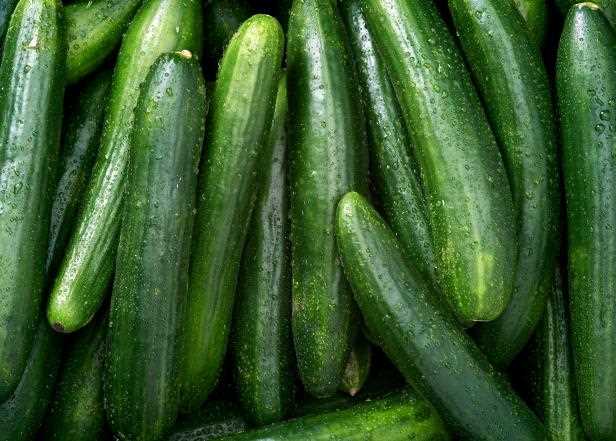
Using biological control methods can be an effective way to manage pests on your cucumber plants. This includes introducing beneficial insects that prey on or parasitize the pests. For example, ladybugs are natural predators of aphids, and their introduction can help control aphid populations.
Chemical control methods
If pest infestations become severe, chemical control methods may be necessary. However, it is important to use pesticides judiciously and follow the instructions provided. Always choose pesticides that are specifically formulated for use on cucumbers and follow the recommended application rates to avoid harming the plants or pollinators.
Physical barriers
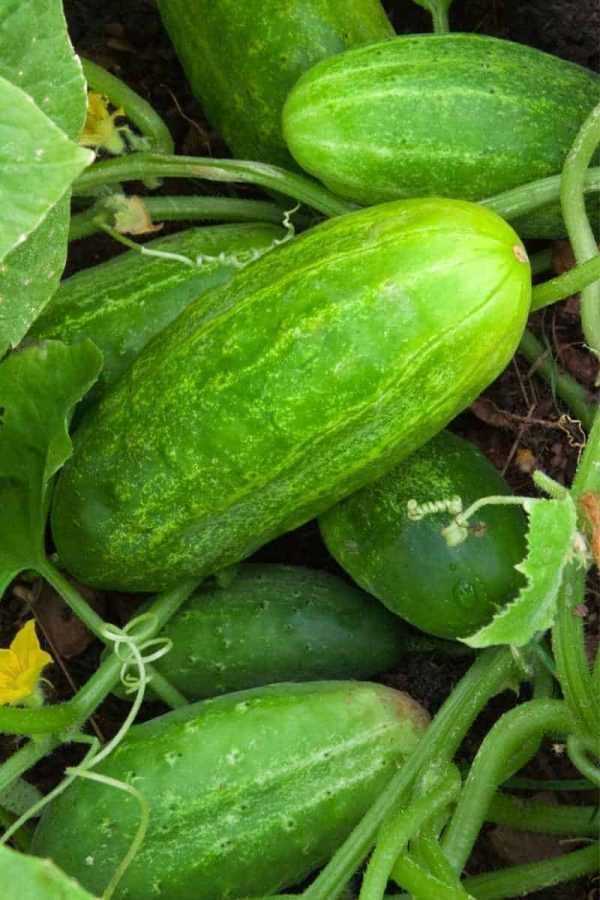
Creating physical barriers can help protect your cucumber plants from crawling pests like slugs and snails. You can use copper strips around the base of the plants or sprinkle diatomaceous earth around them to create a barrier that repels these pests.
Cultural practices
Implementing certain cultural practices can also help prevent pest infestations. These include practicing crop rotation, using clean and disease-free seeds, providing proper spacing between plants for good airflow, and removing any plant debris that can harbor pests.
By monitoring and controlling pests, you can ensure the health and productivity of your cucumber plants, resulting in a bountiful harvest.
Tips for successful cucumber cultivation
Growing cucumbers can be a rewarding experience, but it requires proper care and attention to ensure a bountiful harvest. Here are some tips to help you successfully cultivate cucumbers:
- Choose the right variety: There are many different cucumber varieties available, including slicing, pickling, and burpless cucumbers. Choose a variety that suits your needs and growing conditions.
- Prepare the soil: Cucumbers prefer well-drained soil rich in organic matter. Before planting, prepare the soil by adding compost or well-rotted manure to improve its fertility and moisture retention.
- Provide adequate sunlight: Cucumbers require at least 6-8 hours of direct sunlight each day. Choose a sunny location or consider using grow lights if you’re growing them indoors.
- Plant at the right time: Cucumbers are warm-season vegetables and are sensitive to frost. Plant them after the danger of frost has passed and the soil temperature has reached at least 60°F (15°C).
- Water regularly: Cucumbers have high water requirements, especially during fruit development. Keep the soil evenly moist by watering regularly, especially during hot, dry periods. Avoid overhead watering to prevent foliar diseases.
- Support the plants: Cucumbers are vining plants that benefit from vertical support. Use trellises, stakes, or cages to provide support and keep the fruit off the ground, reducing the risk of rot and disease.
By following these tips, you can ensure a successful cucumber harvest and enjoy fresh, homegrown cucumbers throughout the growing season.
“Question-Answer”
What are the basic requirements for growing ground cucumbers?
Ground cucumbers require good soil drainage, full sun exposure, and consistent watering to grow well. They also thrive in soil pH ranges between 6 and 7.
How often should ground cucumbers be watered?
Ground cucumbers should be watered consistently, aiming to keep the soil evenly moist. They typically require 1 to 2 inches of water per week, depending on weather conditions.
What is the ideal soil temperature for growing ground cucumbers?
Ground cucumbers prefer soil temperatures between 65 and 75 degrees Fahrenheit for optimal growth. Cooler temperatures can slow down their growth, while hotter temperatures can cause stress.
How can I prevent diseases and pests from affecting my ground cucumber plants?
To prevent diseases and pests, it is important to practice good garden hygiene, such as removing any fallen debris and keeping the area weed-free. Regular inspections of the plants for any signs of pests or diseases are also necessary. Additionally, you can use organic pest control methods, such as neem oil or insecticidal soaps, to tackle any issues.
How long does it typically take for ground cucumbers to fruit?
Ground cucumbers usually start to fruit within 50 to 70 days after planting. However, the exact timing can vary depending on the variety and growing conditions.
Can ground cucumbers be grown indoors?
Yes, ground cucumbers can be grown indoors, as long as they receive sufficient light and warmth. Using containers with proper drainage and providing support for vertical growth are important for indoor cultivation.







